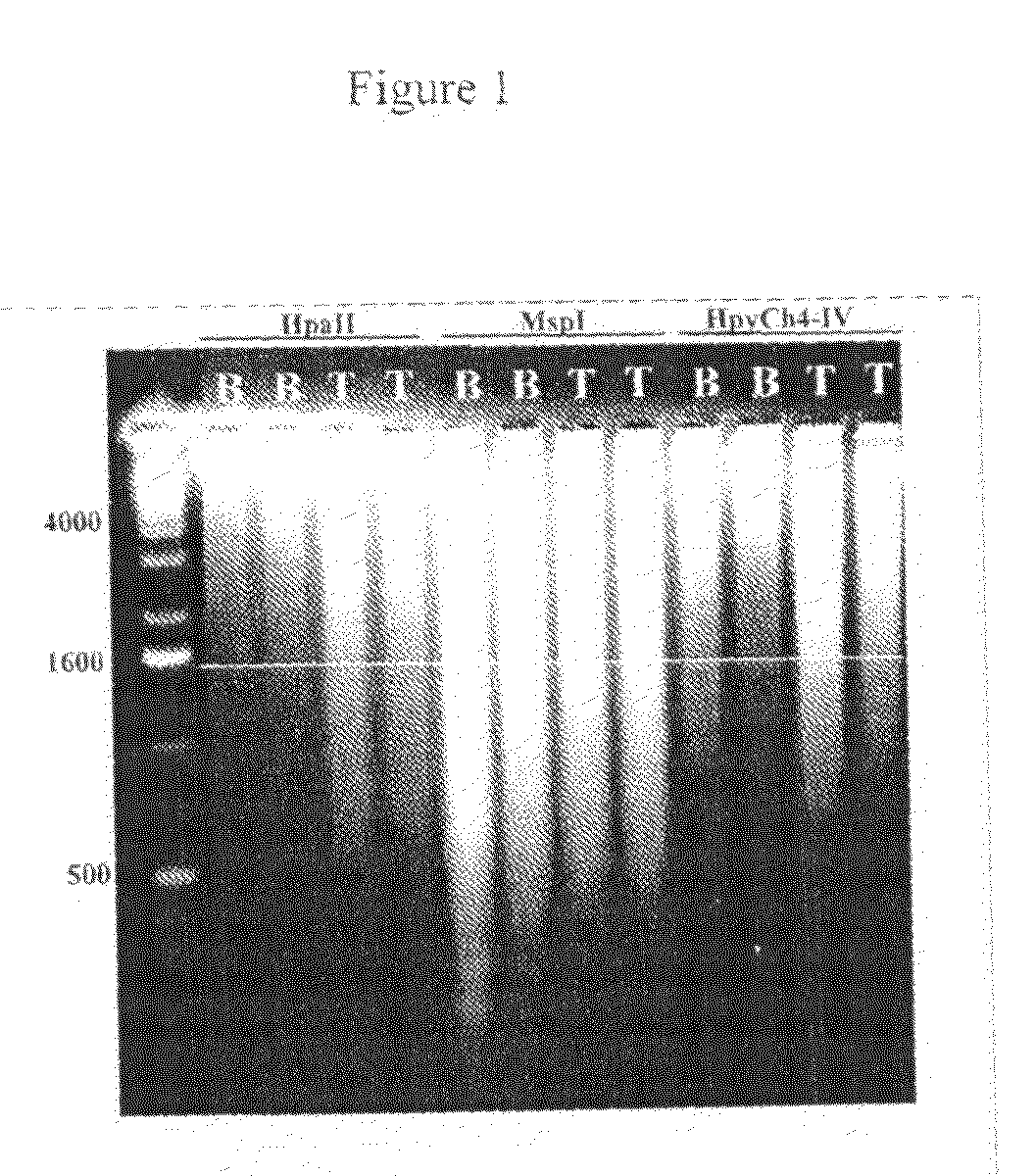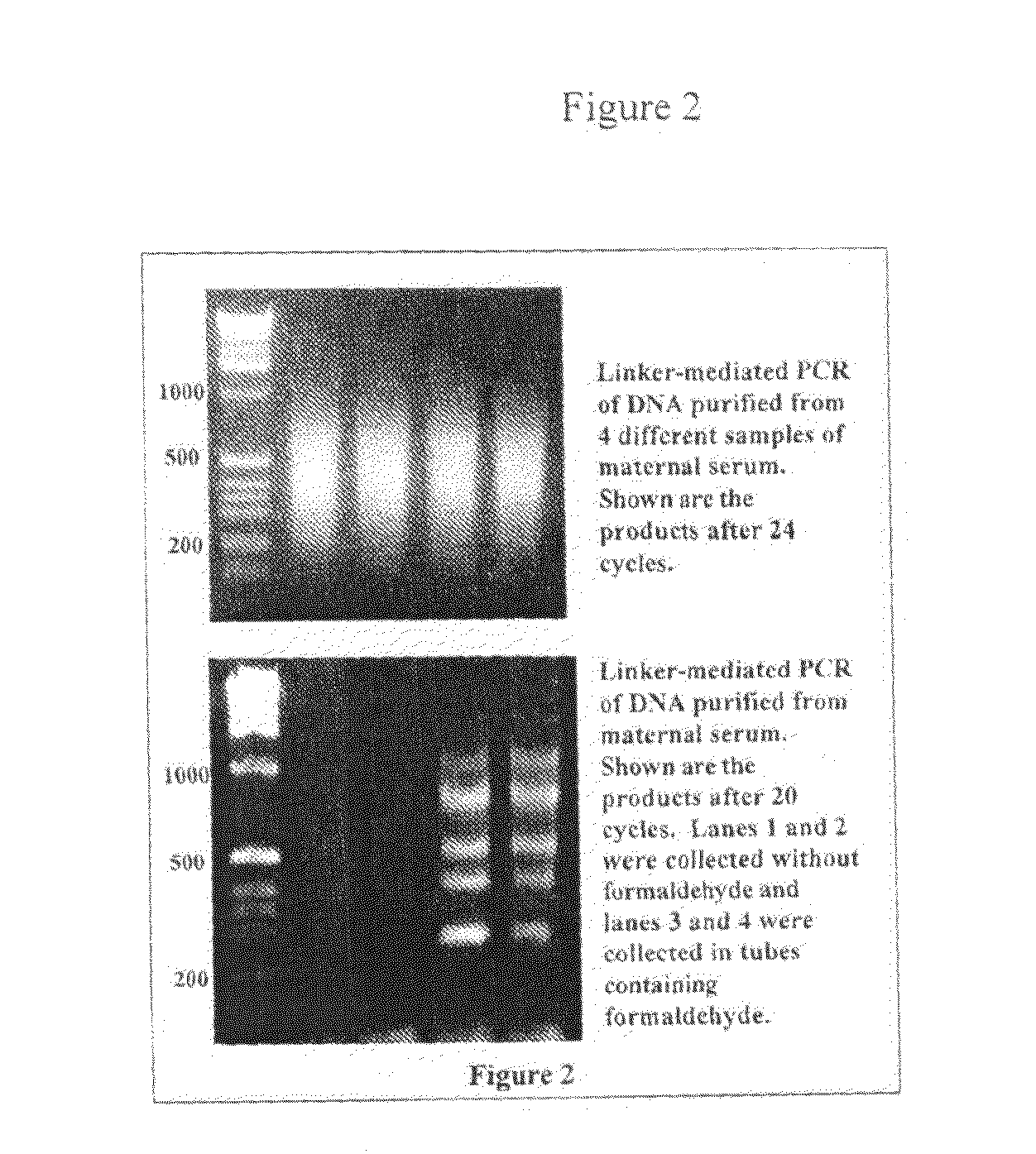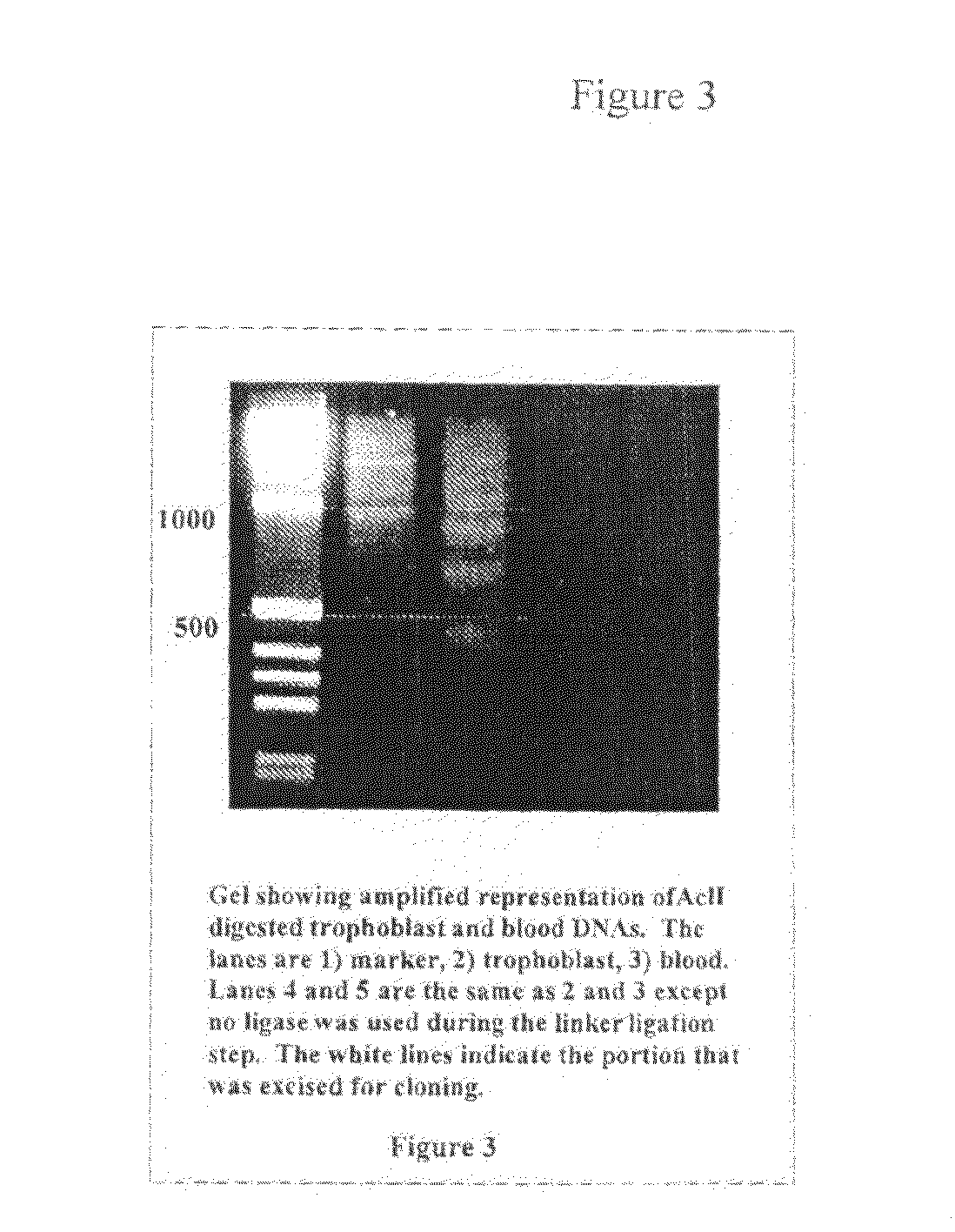Mesenchymal stem cells as a vehicle for ion channel transfer in syncytial structures
a technology of mesenchymal stem cells and ion channels, applied in the direction of nucleotide libraries, biochemistry apparatus and processes, libraries, etc., can solve the problems of severe developmental delay in long-term survivors, prenatal morbidity and mortality, and inadequate current options for aneuploidy testing
- Summary
- Abstract
- Description
- Claims
- Application Information
AI Technical Summary
Benefits of technology
Problems solved by technology
Method used
Image
Examples
example 1
Linker-Adapter PCR to Amplify from Plasma DNA
[0068]Linker mediated PCR was used to amplify DNA derived from the plasma of pregnant women. A standard protocol (Johnson, K. L., et al., Clin. Chem. 50:516-21 (2004)) was used to purify DNA from a 10 ml sample of anti-coagulated whole blood (maternal plasma). The samples were centrifuged twice to remove cells. The resulting plasma was passed over a DNA binding membrane. The DNA was removed from the membrane and the resulting DNA was digested with HpyCh4-IV (cuts at ACGT). Linkers were annealed and ligated, and PCR was performed using the top strand of the linker pair following a published protocol (Guillaud-Bataille, M., et al., Nucleic Acids. Res. 32:e112 (2004)). The linkers were slightly modified so that they created a MluI site when ligated to DNA digested with HpyCh4-IV. The linkers were as follows:
[0069]FIG. 2 shows representative examples of such amplifications and shows that PCR products are easily detected. To prove that the amp...
example 2
Demonstration of Methylation Specific Amplification of Trophoblast / Fetal DNA
[0071]For the purpose of demonstrating differential methylation between trophoblast / fetal and whole-blood DNA, the highly reduced complexity resulting from the use of a rare cutting, AT rich enzyme is beneficial. Therefore, amplified representations from trophoblast / fetal and whole-blood DNA samples using AclI were prepared. Trophoblast / fetal DNA samples were derived from electively terminated first trimester pregnancies between 56 and 80 days gestation, and all whole-blood DNAs were prepared from normal adult volunteers.
[0072]All amplifications were performed according to a published protocol. See Guillaud-Bataille, M., et al., Nucleic Acids. Res. 32:e112 (2004). Briefly, 0.5 ug of genomic DNA was digested with excess AclI in the recommended buffer. 25 ng of this was used to ligate to the linker / adapter pair. Following ligation, 2.5 ng of ligated DNA was used as template for PCR. After 14 cycles, 1 / 10th vol...
example 3
Isothermal Amplification of Circular Molecules Following Nuclease Digestion
[0082]To overcome the leaky amplification issues discussed in Example 2, the present inventors sought to develop a convenient amplification method that, like cloning, would strongly select for bona fide restriction fragments and against non-specifically amplified products.
[0083]To this end, genomic DNA was digested with AclI and linker ligations were prepared as described above. After 12 cycles of amplification with a linker primer, products were digested with MluI (which cleaves off the linker), stripped of low molecular weight (linker and primer) DNA by column purification, diluted to 0.5 ml in 1× ligation buffer (to create a very dilute solution) and treated with T4 DNA ligase overnight. The rationale behind this is as follows. The initial 12 cycles of PCR creates a size-selected representation of AclI fragments as well as unwanted, non-specific products. By digesting and ligating a very dilute solution, i...
PUM
| Property | Measurement | Unit |
|---|---|---|
| Time | aaaaa | aaaaa |
| Sensitivity | aaaaa | aaaaa |
Abstract
Description
Claims
Application Information
 Login to View More
Login to View More - R&D
- Intellectual Property
- Life Sciences
- Materials
- Tech Scout
- Unparalleled Data Quality
- Higher Quality Content
- 60% Fewer Hallucinations
Browse by: Latest US Patents, China's latest patents, Technical Efficacy Thesaurus, Application Domain, Technology Topic, Popular Technical Reports.
© 2025 PatSnap. All rights reserved.Legal|Privacy policy|Modern Slavery Act Transparency Statement|Sitemap|About US| Contact US: help@patsnap.com



